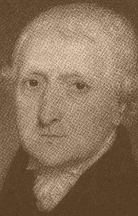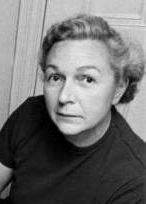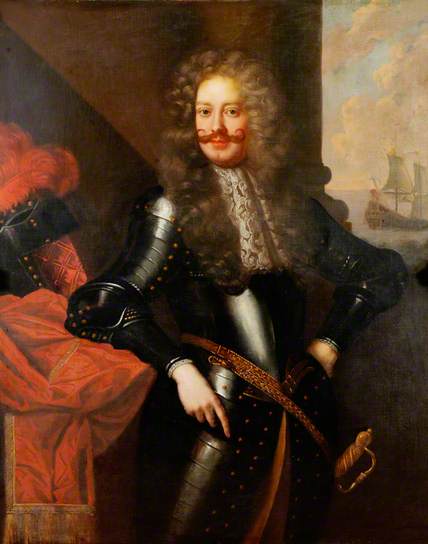
George Austen, Jane Austen’s father
Very little has been known about George Austen’s mother, Rebecca Hampson; what had been on record consisted of not much more than vital events, and some of their dates. That she was the daughter of Sir George Hampson of Gloucester, a doctor of physick and a baronet, is established fact, as is her first marriage to William Walter, with whom she had a son William Hampson; and after William Walter’s death, her marriage to William Austen, and the births of their four children. Her birth date had been extrapolated from the age stated on her grave in Tonbridge, erroneously as it turns out. Until S. G. Hale’s fortuitous discovery of her marriage to William Austen in registers of clandestine marriages, discussed later in this article, we didn’t know details of either of her marriages.
Although I cannot report the discovery of any letters towards constructing a biography, nor of any portraits, the indexing projects of genealogical companies such as Ancestry.com have revealed information which better focuses our curiosity about Rebecca and her two husbands. However, the first previously unrecognised fact predates online research by many years. Austen biographies had not mentioned the name of Rebecca’s mother, but The Complete Baronetage, published in 1902,1 states that George Hampson married Mary Coghill, daughter of John Coghill of Bletchingdon in Oxfordshire. The Coghills were a long-established Yorkshire family, until Mary’s grandfather Sir Thomas settled his branch at Bletchingdon. It is from that village, just north of the city of Oxford, that the first new facts emerge.
George (not yet Sir George) Hampson and his wife Mary had their seven children baptised in the parish church, St Giles. Presumably they lived there; the fifty miles between the city of Gloucester and Bletchingdon would have been a dangerous distance over which to carry a newly born child, for the sake of baptism. Rebecca was baptised on 17 September 1693. The entry is unusually detailed, naming her godparents: John and Mrs Coghill (presumably her maternal grandparents), and Mrs Knapp (her maternal aunt Elizabeth, née Coghill). The stone slab in St Peter and St Paul’s, Tonbridge, recording her death in 1733, states that she was then 36; she was 39.

Nothing is known of Rebecca’s childhood, nor of the date on which her father relocated the family to Gloucester. Now we have to fill gaps with assumptions. William Jarvis and Gilbert Hoole established, as they wrote in their article in the Annual Report of 1985,3 that her first husband William Walter, another doctor of physick, came from Tonbridge. He may have gone to Gloucester as an assistant to George Hampson, but we don’t know. We must assume that William and Rebecca married, but a search through the parish registers of St Michael’s, and St John’s, the two parishes with which the family are known to have been associated, has not provided any evidence; nor has Ancestry, so far, suggested another parish.
Now the new discoveries become more interesting. The couple had not one child, William Hampson Walter, but three. There is an entry in the parish register of St Owen’s, Hereford, for the baptism on 11 August, 1719, of Leonora, daughter of William Walter and his wife Rebecca.4 Although there is no corroborating evidence to confirm that it was this couple I am confident, because of the date and the combination of names. Hereford is not too far from Gloucester; William may, perhaps, have been seconded there for a time.
There must be significance in the choice of the name Leonora for Rebecca’s first and last daughters, but I have not found a precedent within her family. Another researcher has reported, although without evidence, that Leonora was buried on 19 November of the same year. She certainly did not appear in any later records. The date of her baptism in August 1719 provides a benchmark for the date of William and Rebecca’s marriage – one would expect that to have taken place by the end of 1718.
Their second child, William Hampson Walter, was baptised back at St Michael’s, Gloucester, on 31 August 1721. He survived into his late seventies, and is well documented, so I won’t dwell on him
The third Walter child was a boy named St George, who was baptised at St John the Baptist, Gloucester, on 25 June, 1723. The next record is, sadly, for his burial at Tonbridge on 29 September, 1725. George was the name of both Rebecca’s and William’s fathers, and she used it again in naming George Austen. This register entry shows that William and Rebecca were in Tonbridge during the year before his death. It had been thought that Rebecca did not visit the town till after that event, probably to look into the leasehold properties that he had held there.


Rebecca married again some nineteen months later, to another William – William Austen.
We do not know how they met, but we can guess. William Austen’s brother-in-law George Hooper, the husband of his sister Elizabeth, represented the fifth generation in a family of Tonbridge attorneys. George Hooper was well known to William Walter, who nominated him in his will as one of the two trustees. It would have been natural for the Walters to visit the Hoopers on their 1725 visit, where they may have encountered William Austen. Within the close-knit circle of Tonbridge gentry, there must have been other opportunities to meet.
Stephen Hale, a member of the Society of Genealogists and of the Jane Austen Society, was the best-qualified person to recognise the significance of an entry for 13 January, 1727/8, in the registers of Clandestine Marriages in the Liberty of the Fleet, for William Austen of Tonbridge, Surgeon, and Rebecca Walter, also of Tonbridge.7 The Liberty of the Fleet was an area on the western edge of the City of London, surrounding the Fleet Prison for debtors, which was largely free of ecclesiastical oversight. There were many ‘marrying houses,’ where indebted clergymen could earn money to pay for their keep and ultimate release; however the specific locations of clandestine marriages were seldom noted in the registers. It is estimated that over 300,000 marriages took place there between 1720 and 1754. For many couples, it was simply a matter of convenience – they may both have come to London from distant parishes, and could marry quickly on the purchase of a licence. For others, they were definitely clandestine.
Why did William and Rebecca marry secretly, away from Tonbridge? No doubt they anticipated opposition from family and society. The couple’s age difference was greater than had been assumed – Rebecca was 34 and William 27. Fathers contributed property or finance on the first marriage of offspring, but not normally to a subsequent union; besides that, Sir George Hampson’s death had preceded William Walter’s by some twenty months. By remarrying, Rebecca sacrificed her half-share in her first husband’s property to their son. Whatever wealth William Austen had at his young age accumulated, and whatever status Rebecca had as the daughter of a baronet, their position in society was going to be precarious.
It is clear from a letter written by William’s aunt, Mary Tilden (née Weller), that he felt awkward. In the Annual Report of 2009 Mark Ballard, a Kent County archivist, transcribed some lines from her letter of 4 April 1728, written to her brother Edward Weller. They are worth repeating:
In your last you hinted … you thought there was now nothing of Cous. Will Austen’s amour which I then wonder’d at, but I suppose my Brother [Robert] has told you what reason we have to think he is now married. I think he acts very foolishly in not declaring it and living as if it was so. I find him close & sullen if anything is mention’d to him of it tho I believe he’d have us think he is married. I said something to him a day or so ago and he answer’d me very ruff and unrespectfull. I found he was tutchd when I said the widow I believ’d was not that sincere person he believed.8
Mary’s misgivings concerning William’s behaviour are understandable, but we don’t know why she was suspicious of Rebecca. It appears that this first marriage of William’s was a love match and that Rebecca was prepared to sacrifice financial security for the emotional comforts of partnership. The couple wanted to be united despite the possibility of insecurity. What security they did gain was short-lived; Rebecca died only five years later, on 6 February 1732/3, shortly after the birth of the second Leonora. William died on 7 December, 1737. The eldest of their surviving children, Philadelphia, was nearly eight years of age; George, Jane Austen’s father, was six; and Leonora, nearing four.
The new records presented here are only markers of events; we still know very little about the lives and characters of Rebecca and her two Williams. I began this article saying that this new evidence better focuses our curiosity; it leaves us wishing for more.
About the author:

Ronald Dunning, Author
Ronald Dunning is the creator of Ancestry.com: The Jane Austen Page ” which is undergoing an update as his research continues. He learned through his grandmother that her family was in some way related to Jane Austen. After moving from Canada to England in 1972, he pursued this intriguing information and discovered that Frank Austen [Jane’s brother] was her great-great-grandfather. Find more information in Deb Barnum’s 2012 interview with Mr. Dunning for Jane Austen in Vermont, An Interview with Ron Dunning on his Jane Austen Genealogy ~ The New and Improved Jane Austen Family Tree!
Also, click on this link to Sir Thomas More and Jane Austen on this blog by Ronald Dunning.
Notes
. The Complete Baronetage, ed. G. E. Cokayne, pub. William Pollard & Co. Ltd., Exeter, 1902. Vol.2, p.177
- With the permission of the Oxfordshire History Centre. St Giles, Bletchingdon, parish registers. Ref. PAR36/1/R1/2.
- Annual Report, 1985: ‘William Walter – An Investigation by Gilbert Hoole and William Jarvis’
- Ancestry.com. St Owen’s, Hereford; Family History Library Film Number 1041600
- Gloucestershire Archives. St John the Baptist, Gloucester, parish registers. Ref. P154/9 in 1/5
- With the permission of the Kent History and Library Centre, ref. P371/1/A/4
- Annual Report for 2010, p.79, ‘Jane Austen’s Grandparents: William and Rebecca Austen.’ The marriage was listed in at least three registers of Clandestine Marriages, held at The National Archives in Kew: RG7/67, RG7/85, and RG7/403.
- Annual Report for 2009, p.71, ‘Jane Austen’s Family in the Centre for Kentish Studies, Maidstone;’ Mark Ballard and Alison Cresswell. Kent History and Library Centre, ref. KHLC U1000-18 C1-12
Read Full Post »























